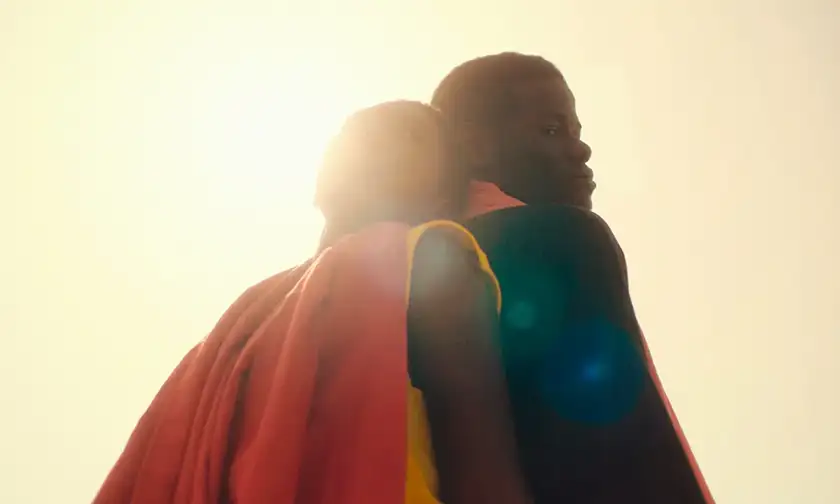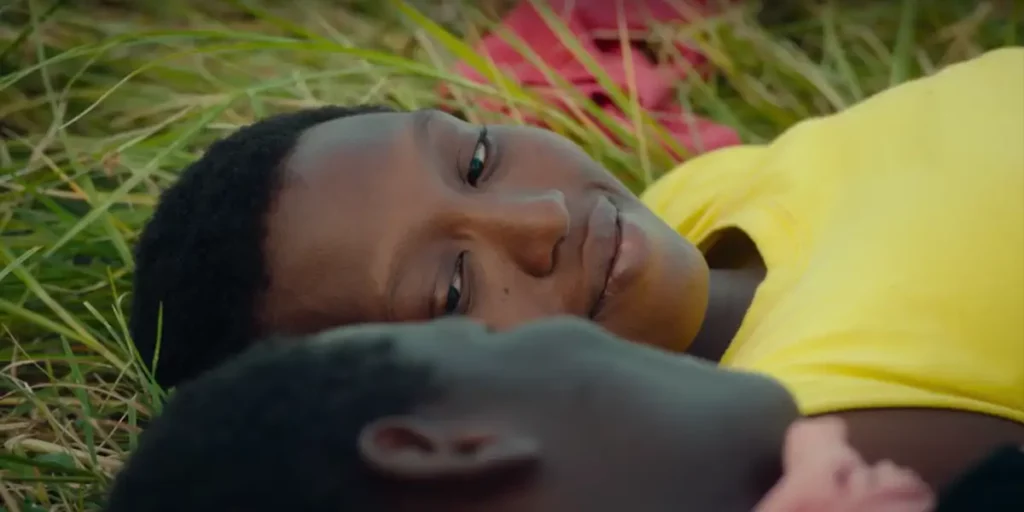A love story unlike any other, Banel & Adama gives us a glimpse into the life of a young couple in the north of Senegal.
Director: Ramata-Toulaye Sy
Genre: Drama
Run Time: 87′
UK Release: March 15, 2024
US Release: June 7, 2024
Where to watch: in theaters
“You cannot go against your destiny,” says one of the characters in Banel & Adama. This sums up one of the driving forces of the film as the audience is presented with a love story that seems to defy destiny, or at least attempts to do so. The film is written and directed by French-Senegalese filmmaker Ramata-Toulaye Sy in her feature directorial debut.
After its premiere at Cannes in 2023 and having been chosen as the Senegalese entry for Best International Feature Film at this year’s Academy Awards, I was very excited to finally see this movie I had heard so much about.
Banel & Adama focuses on the titular couple Banel (Kadhy Mane) and Adama (Mamadou Diallo) who live in a small semi-isolated village in northern Senegal. The two seem very different – Adam is introspective and reserved, while Banel is more impulsive and rebellious – but they are deeply in love with each other. They try and make a life for themselves, living separately from their respective families until chaos takes over the village. Banel and Adama are caught in the middle of it as Adama constantly refuses to serve as the village’s leader: will he fulfil his birthright like everyone expects him to and lose Banel while doing so?
The stunning visuals are what stands out the most about the film: visionary and daring, Ramata-Toulaye Sy’s style is very clear and an absolute pleasure to watch on the big screen. As the film progresses, the audience gets to see the beautiful landscapes and scenery of Senegal as we are truly immersed in the northern village Banel & Adama is set in. Most of the film keeps this realistic documentary-like tone with its use of non-professional actors and exclusively diegetic sound and music, which gives us a clear idea of what life in Senegal looks like for Banel and Adama.
I particularly liked how the cast of the Banel & Adama is made up of non-professional actors. Neither Khady Mane nor Mamadou Diallo are professional actors, as hard as that may be to believe as their stellar performances as Adama and Banel are a big part of the film’s success. At the same time, perhaps the key to the film’s authenticity is in this very choice: ultimately this is a story about everyday people in the north of Senegal portrayed by the same regular people who live in the very region the film was shot. Similarly, the choice to shoot on location in northern Senegal also plays a big part in creating this feeling of authenticity that we perceive from the very first scene of the movie.

The use of language in Banel & Adama is also fascinating: the entire film is performed in Pulaar, a variant of the Fula language that is spoken as a first language by the people in the Senegal River area. It is not a language most of the audience will be familiar with, or even know about, before seeing the movie, especially as Pulaar is a declining language in West Africa, despite various efforts to revive it and teach Pulaar literacy in Senegal and nearby countries. In the film, the language itself is key to understanding the characters and what their life in Senegal looks like, with a rhythm and pace that is often dictated by nature and dependent on it, as we see throughout the movie.
Banel & Adama explores societal constraints as its main theme. Both Banel and Adama are under a lot of pressure to follow their destiny, which is to say fulfil the expectations society has placed upon them. For Adama, this means the pressure of taking on the role of village leader, so much so that the entire future of the village and its very survival seem to depend on it. Banel may not be asked to be the leader of the village, but the expectations on her are just as high and constrictive: as a woman, everyone is keen on reminding her of her place, which does not sit well with a rebellious soul like Banel who strives to do what she wants, rather than what she is told.
However, I wish the film had explored the supporting characters just as much. While the main focus is understandably on Banel and Adama, there is an entire village that Banel & Adama only briefly portrays. A lot of these characters are key to the film too, as the very conflict at the centre of the plot comes from the other people in the village. This is why I would have liked to see them a little bit more to further expand the commentary on the societal roles Banel and Adama are expected to live up to.
Banel & Adama is a powerful film with beautiful and lyrical visuals that work to support its strong social themes, making it a particularly remarkable movie. While the story may seem very specific to Senegal, and to the village the characters live in, the audience can find themes in this movie that easily become universal, particularly when it comes to Banel and her pre-determined role within society as a woman. The director’s visionary style combined with the social criticism in terms of gender equality makes this film an impressive debut by a very promising filmmaker.
Banel & Adama was released in cinemas in the UK & Ireland on 15 March, 2024. The film will have a limited US theatrical release in New York on June 7, 2024 and in LA on June 14.

